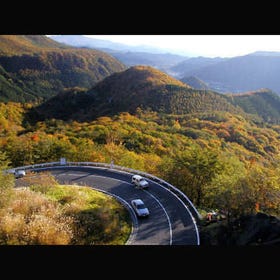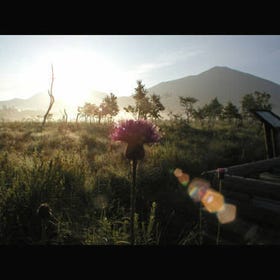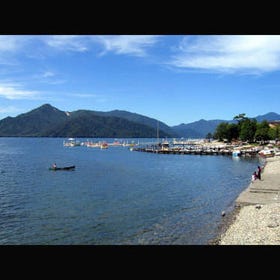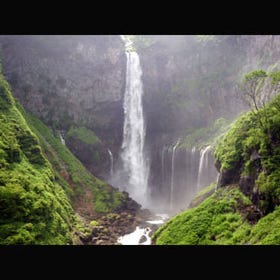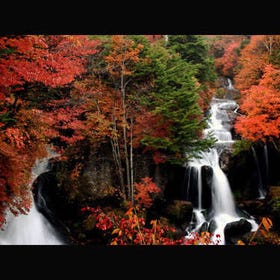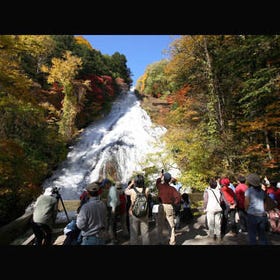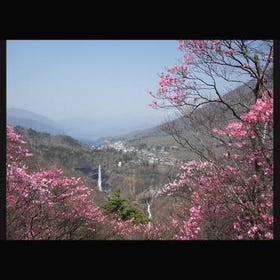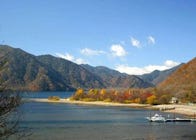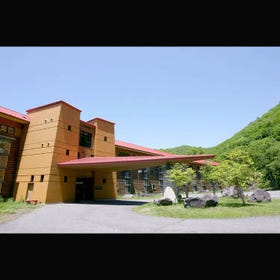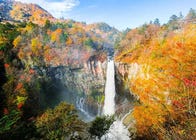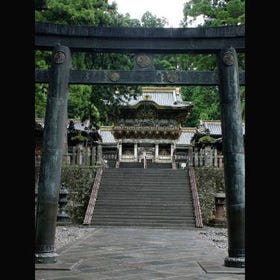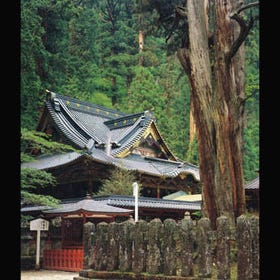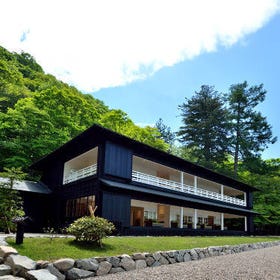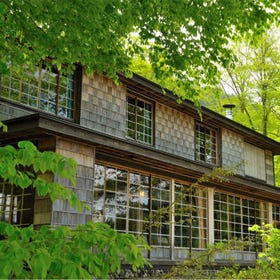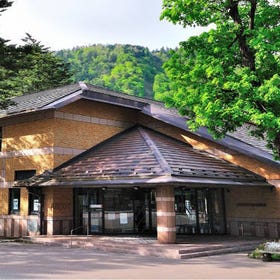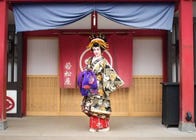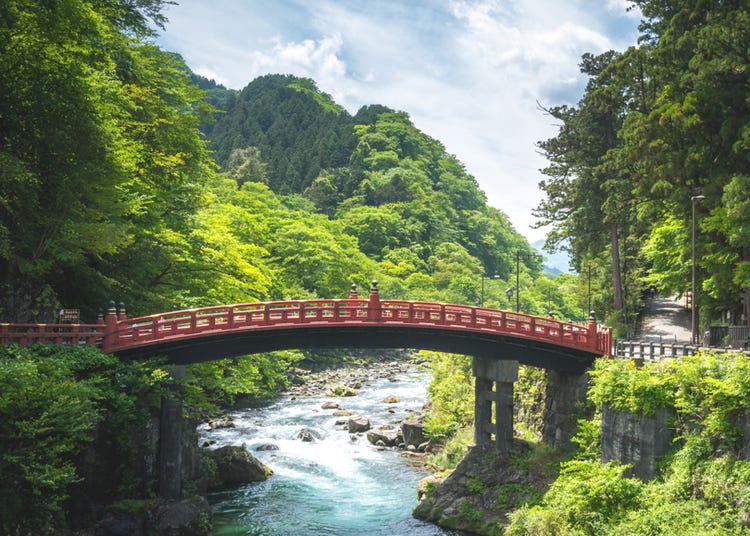
Your Trip to Nikko: The Complete Guide (Activities, Hotels, Savers & More)
- Written by: Miyu Shimada
Located in northwestern Tochigi Prefecture, about two hours by train from Tokyo, Nikko is one of the Kanto region’s best tourist destinations. It has a wealth of sights where visitors can enjoy history, nature, hot springs, historical buildings like world heritage Nikko Toshogu, Kegon Falls, one of the three most famous waterfalls in Japan, Irohazaka, and Lake Chuzenji.
Here we’ll introduce basic info about Nikko and the latest sightseeing and dining recommendations.
1. What is Nikko?
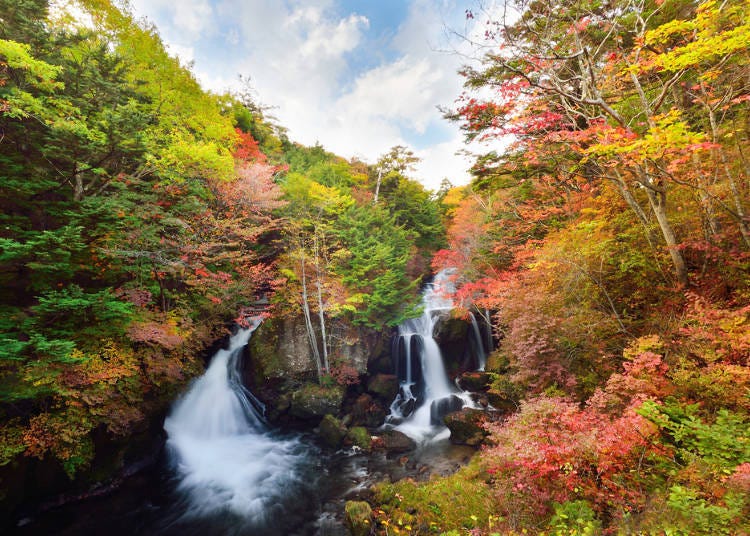
Located in northwestern Tochigi prefecture in the northern part of the Kanto region, Nikko is the third-largest city in Japan in terms of area. With its picturesque landscape that transforms with the seasons, along with the presence of nearby mountains and lakes, such as Mt. Nantai and Lake Chuzenji, Nikko ranks as one of Japan's premier tourist destinations, attracting more than 12 million visitors annually.
Founded by a monk named Shodo Shonin in 766 AD, Nikko has remained a place of worship throughout its history. Nikko Toshogu, the well-visited resting place of Ieyasu Tokugawa, the inaugural shogun of the Tokugawa family during the Edo period (1603-), is a significant historical site within Nikko.
In 1999, along with Nikko Futarasan Shrine and Nikkosan Rinnoji Temple, Nikko Toshogu was inscribed as a UNESCO World Heritage Site in the "Japanese shrine or temple" category. Additionally, the area is home to numerous temples and shrines, often regarded as "power spots" due to their substantial historical and cultural significance.
Nikko encompasses a vast area, with notable regions including the World Heritage area and the Oku-Nikko (Inner Nikko) area, which is approximately an 80-minute bus ride from the city. Situated at an altitude of around 1,300 meters, Oku-Nikko is renowned for its mountains, lakes, waterfalls, and natural hot springs. At Lake Chuzenji, visitors can relish the scenic beauty through boat rides or kayaking, while the Akechidaira Observatory presents a breathtaking panorama of the lake and the surrounding mountains.
As recently as 2018, Nikko has been a favored destination, drawing around 100,000 international tourists annually. Nikko Toshogu earned the 7th spot among Japan's "Most Popular Tourist Spots for Foreigners 2020" according to TripAdvisor.
Historically, Nikko was a favored summer retreat for foreigners residing in Japan, and Western influences have left a lasting mark on the area, contributing to its welcoming atmosphere for visitors. Nikko's traditional architecture and rich history and culture have garnered worldwide recognition.
2. The best time to visit Nikko
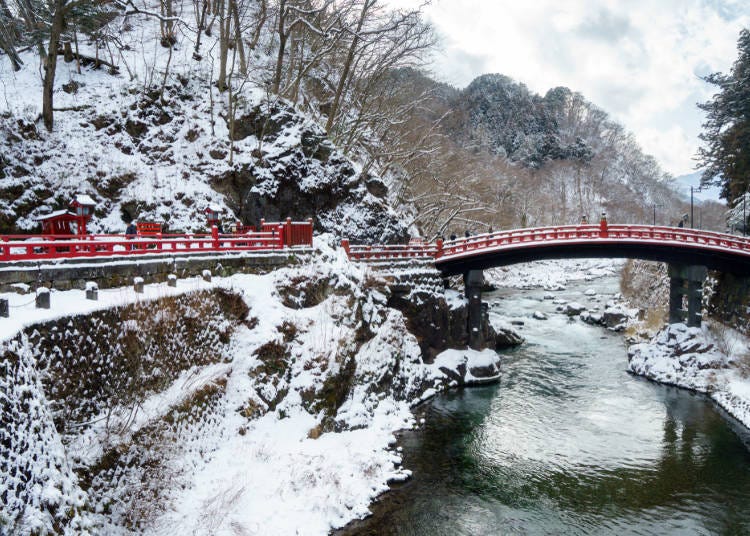
The allure of Nikko's historical structures and stunning natural landscapes can be appreciated throughout the year, but autumn and winter stand out as particularly recommended seasons to visit.
Nikko's autumn foliage is renowned across Japan, with the prime leaf-viewing period occurring from mid-October to early November. Key locations for experiencing this vibrant display of colors include Ryuzu Falls, Lake Chuzenji, Kegon Falls, and the picturesque Irohazaka, which has earned a place among the "100 Best Roads in Japan."
During winter, Nikko boasts stunning snowy landscapes and offers a plethora of unique seasonal experiences and sights, including the enchanting spectacle of snowfall while soaking in a hot spring, frozen waterfalls, and the captivating Oku-Nikko Snow Festival.
Throughout the year, the region maintains temperatures approximately 3° to 7°C (5° to 13°F) lower than Tokyo. Nikko's temperature can exhibit significant fluctuations within a single day, and even during summer, mornings and evenings tend to be refreshingly cool. It's advisable to dress appropriately to accommodate this temperature range.
Due to Oku-Nikko's high altitude, it remains chilly in spring, and in autumn, the temperatures resemble midwinter conditions in Tokyo. Winter brings snowy landscapes and sub-freezing temperatures.
3. Nikko Transportation
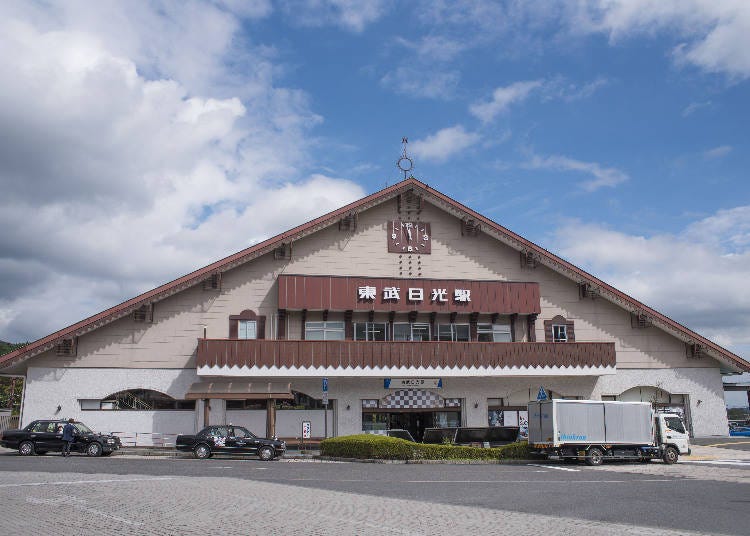
Getting to Nikko from Tokyo
By Train: Nikko is well-connected by rail, with JR Nikko Station and Tobu Railway's Tobu Nikko Station serving as primary options. While the two stations are conveniently located just a 5-minute walk apart, Tobu Nikko Station is often considered more convenient for sightseeing purposes.
For travelers departing from Tokyo, the recommended route is via Asakusa Station. Although there are fewer departures, you can reach Nikko directly in approximately 2 hours by taking the express JR/Tobu "Nikko" train from either Shinjuku or Ikebukuro.
Available Routes:
- JR: Nikko Line to Nikko Station
- Tobu Railway: Tobu Railway Nikko Line, Tobu Isezaki Line to Tobu Nikko Station
- 1. Via JR
- Tokyo Station <Tohoku Shinkansen> → Utsunomiya Station <Nikko Line> → Nikko Station; approximately 2 hours (5,150 yen for unreserved Shinkansen seats)
- 2. Via JR + Tobu Railway
- Tokyo Station <JR Ueno Tokyo Line bound for Tsuchiura> → Kitasenju Station <Tobu Isesaki Line “Tobu Limited Express Spacia”> → Tobu Nikko Station; approximately 2 hours and 3 minutes (3,570 yen)
- ・Access from Shinjuku and Ikebukuro
- JR/Tobu direct limited express “Nikko,” approximately 2 hours (4,090 yen)
- ・Access from Ueno
- Ueno Station <Tokyo Metro Hibiya Line> → Kita-senju Station <Tobu Isesaki Line “Tobu Limited Express Spacia”> → Tobu Nikko Station; approximately 2 hours (3,520 yen)
- *Please note that train names on the Tobu Railway “Limited Express Spacia” vary depending on the destination: “Kegon” for departures and arrivals at Tobu Nikko Station and “Kinu” for arrivals and departures at Kinugawa Onsen Station on the Kinugawa Line.
- * Prices for tickets only
- * For stops between Kurihashi and Shimoimaichi station, JR Rail Pass can only be used on express trains operating directly with Tobu Railway.
Tip: You can ride trains and buses in the Nikko area freely with the “NIKKO Discount Ticket”!
This round-trip ticket between a Tobu Railway departure station, (e.g. Asakusa) and Imaichi station allows you to get on and off trains along the designated section of the Tobu Line. It’s valid for 4 days, making it perfect for a leisurely-paced trip.
Getting to Nikko by Bus
You can also take a highway bus from Tokyo Station. From the Yaesu South Exit of Tokyo Station, Take the Tohoku Kyuko Bus “Tokyo-Nikko / Kinugawa Line” to Tobu Nikko; approximately 2 hours 55 minutes (2,500 yen) (*Not in operation as of September 2023)
Details: Tohoku Kyuko Bus website
Getting around Nikko
There are many convenient passes for Nikko tours. The pass exclusively for foreign tourists is a great deal and recommended.
▶ “NIKKO PASS all area” for foreigners visiting Japan
This pass allows you to enjoy not only the famous shrines and temples of Nikko, but also the Lake Chuzenji Kisen and Akechidaira Ropeway and also includes discounts at various venues.
Price: Summer (4/20 - 11/30), adults 4,780 yen, children 1,330 yen; Winter (12/1 - 4/19) adults 4,160 yen, children 1,080 yen.
Validity: 4 days
▶ “NIKKO PASS world heritage area” for foreigners visiting Japan
This pass is convenient for those who want to see the temples and shrines in Nikko’s World Heritage Site area.
Price: adults 2,120 yen, children 630 yen
Validity: 2 days
4. Staying in Nikko
Nikko, also called “Nikko Yumoto Onsen,” has long been a popular hot spring resort, with many hotels and inns featuring hot springs. There is a wide variety of hotels, from affordable inns and hotels to luxurious 5-star hotels and luxury inns.
The hot spring inns around Nikko Toshogu are convenient for sightseers, and if you’re hoping to relax in the nature, calm, quiet Oku-Nikko Inn is recommended.
5. Food in Nikko
Nikko's local specialty is “Yuba” – tofu skin. Taking advantage of the mountains’ groundwater and springs, dishes like “Yuba Musubi” and “Yuba Soba,”and sweets like “Fried Yuba Manju” and “Yuba Soft Cream” are must-tries. In addition, pudding, cheesecake, and other sweets made with Tochigi's specialty strawberries, and shaved ice made with Nikko's natural ice are also popular.
6. Culture in Nikko
With its wealth of historical temples, shrines, and world cultural heritage bulidings, Nikko is full of must-see architecture:
・ Nikko Toshogu: The shrine where Ieyasu Tokugawa is enshrined
・ Nikko Futarasan Shrine: A shrine dedicated to a god of marriage
・ Nikkozan Rinnoji Temple: With 15 branch temples, including the largest wooden temple in Nikkoyama.
・ Shinkyo: A beautiful vermillion wooden bridge
・ Nikko Shinko Church: A Gothic church
There are also many traditional crafts in Nikko. “Ippitsu Ryu,” an artform in a dragon is drawn with a single stroke, “Nikko Geta,” footwear once worn on shrine grounds, and “Nikko-bori,” the city’s distinct wood carving style, are recommended souvenirs. Some Nikko-bori can be carved on the spot and used as a key chain or nameplate.
7. Activities in Nikko
Nikko is rich in nature, and you can enjoy a multitude of activities in the great outdoors including hiking and trekking around Hangetsuyama and Senjogahara as well as sightseeing boats and canoes on Lake Chuzenji.
There are also campgrounds, and stargazing tours and unique night tours are also popular. Trout fishing in Oku-Nikko in summer and snowshoeing in Senjogahara in winter provide seasonal fun.
8. Shopping in Nikko
Buying local sweets, crafts, and specialty Yuba products are part of any Nikko trip. The Fujiya Tourist Center has locations near Nikko Toshogu Shrine, Nikko Sanrokuoji Temple, and Nikko Futarasan Shrine, and is a convenient souvenir shop that sells everything from sweets to crafts including limited edition products like “Tochiotome Cheesecake” and more.
9. Sightseeing near Nikko
For sightseing in areas near Nikko, the Kinugawa River is recommended. It is one of the leading hot spring resorts in Kanto, with many hotels and inns throughout the Kinugawa Valley. When it was discovered at the beginning of the Edo era, it became an exclusive getaway where only a limited number of people such as the daimyo or monks could enter.
From Nikko, you can get there by train (Tobu-Nikko Line) or bus.
The Tobu World Square, Edo Wonderland Nikko Edomura theme parks, and the Kinugawa Ropeway, offering spectacular views, are ideal destinations for families. What's more, these attractions have facilities that qualify for discounts and are conveniently accessible from Nikko using a transportation pass, so be sure to explore these options for a memorable family outing.

Nikko's tourist attractions are readily reachable from the city center, and the region is brimming with both natural and historical allure that transforms with the seasons. Sightseeing is becoming increasingly convenient with specially designed train passes exclusively for foreign tourists visiting Japan. Besides day trips, visitors can also indulge in the local hot springs at their own pace, ensuring you'll discover a destination that perfectly complements your travel preferences.
English translation by Gabriel Wilkinson
Miyu is a travel writer and tour conductor with over a decade of experience in developing educational content for working individuals. She has a passion for exploring new cultures and has visited more than 150 cities in around 50 countries. Her goal is to sample great food, experience nature, enjoy historical sites, and bathe in hot springs around the world. Miyu left her corporate job to pursue her passion for travel and now spends over 100 days a year abroad while working as a writer. She promotes the joy of travel, the beauty of Japan, and the diverse cultures of the world by traveling to different parts of Japan and collaborating with inbound tour operators and fellow travel writers.
*Prices and options mentioned are subject to change.
*Unless stated otherwise, all prices include tax.
Popular Tours & Activitiess
Recommended places for you
-

Tokyo City Pass Upgrade: Harry Potter Studio Tour & Top Sights up to 85% Off
by: Guest Contributor
-
Ad

Preserving the Beauty of World Heritage Site Shirakawa-go for the Future Through Responsible Travel
-

Enjoy Japan's Gorgeous Winter Lights! Ride the Romancecar to Shonan no Hoseki Illumination
by: Guest Contributor
-

Keisei × Keikyu 16-Temple Goshuin Tour: Discover Deeper Tokyo & Yokohama
by: Guest Contributor
-

Simply Oishii Wagashi School Discover Japanese Culture Through Wagashi: A Hands-On Experience!
by: Guest Contributor
-

How to Get Don Quijote's Exclusive 2025-2026 Winter Gift (+Tax-Free Savings)
Inspiration for Accommodations
-

Enjoy Mt. Fuji from the Comfort of Your Room! Recommended Ryokan with Mt. Fuji View
-

Stay Near the Cherry Blossoms! Hotels for Cherry Blossom Viewing in Tokyo
-

Family-Friendly Hotels with Free Shuttle to Disneyland: Convenient Access for a Magical Stay
-

Top Ranked Hakone Hotels with Mt. Fuji View: Enjoy Stunning Scenery from Your Private Space
-

Convenient Tokyo Hotels with Airport Shuttle: Ideal for Families and Heavy Luggage
-

Stunning Tokyo Tower View Hotels: Enjoy Spectacular Scenery from Your Private Space
-

Convenient Asakusa Hotels with Kitchens: Ideal for Extended Family Visits
-

Experience Luxury: Hakone's 10 Best Five-Star Accommodations
-

Enjoy Mt. Fuji Autumn Leaves! Top Hotels Near the Popular Autumn Leaves Corridor
-

Experience Hakone Fall Foliage from Your Room with Stunning Views
-

Shibuya Crossing: Getting the Best View from the Deck at Magnet by Shibuya109!
-

Numazuko Kaisho in Ueno: Good Quality, All-You-Can-Eat Seafood for Just US$12!?
-

Spending Wonderful Time Alone in Shibuya - Free Cosmetics and a Hundred-Yen Bus!
-

Tokyo Station Top 10 Sweets Ranking!
-

Outdoor sports and local delicacies in Miyazaki's UNESCO biosphere reserves
-

What to Pack for Japan: 8 Essential Things for a Hassle-Free Trip
- #best ramen tokyo
- #what to buy in ameyoko
- #what to bring to japan
- #new years in tokyo
- #best izakaya shinjuku
- #things to do tokyo
- #japanese nail trends
- #what to do in odaiba
- #onsen tattoo friendly tokyo
- #daiso
- #best sushi ginza
- #japanese convenience store snacks
- #best yakiniku shibuya
- #japanese fashion culture
- #best japanese soft drinks













